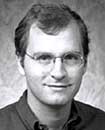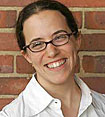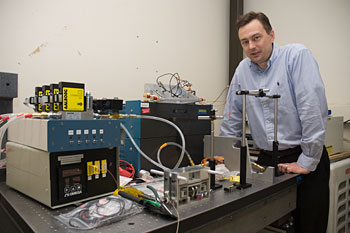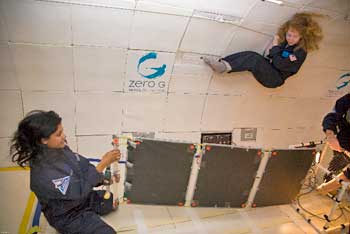
SEPT 2009In this issue:
|
||
|
1. Honors and recognitionThe National Academy of Engineering has selected Professor Nick Roy as one of "eighty-eight of the nation's brightest young engineers" to take part in its Annual U.S. Frontiers of Engineering symposium this month at the University of California, Irvine. According to NAE President (and former MIT President) Chuck Vest, "The U.S. Frontiers of Engineering program brings together a diverse group of this country's most promising young engineers, and gives them a forum to discuss multi-disciplinary ways of addressing the issues that will carry us into tomorrow's economy." |
|
|
||
|
3. Spaceflight training for Newman, WagnerProfessor Dava Newman and lecturer Dr. Erika Wagner are among a dozen scientists, students and educators who have been selected to undergo National AeroSpace Training and Research/Southwest Regional Institute suborbital flight training. "Essentially, Dava and I were selected to go through a flight training course that would prepare us for conducting science on Virgin Galactic or one of the other new commercial vehicles," says Wagner. "Think of it as suborbital payload specialists, with much less training than the typical NASA route." |
|
 |
||
Aboard the Zero-G flight, Tina Srivastava (left) and Jillian James test microgravity deployment of a solar panel for an undergrad satellite project. (Steve Boxal/Zero Gravity Corp. photo) |
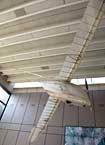
Monarch on display at the Museum of Science
7. Monarch makes final landing
For nearly 25 years, the Monarch aircraft has hovered above the heads of millions of visitors to Boston's Museum of Science. On August 25, the venerable AeroAstro-built human-powered plane made its last descent — via a tether — to the museum floor, to make way for new display. Assisting in the removal and dissassembly was Professor Mark Drela, a member of the crew that built Monarch, which, in 1984, won the Kremer World Speed Competition Prize for making the first human-powered flight around a 1500-meter course in under three minutes.
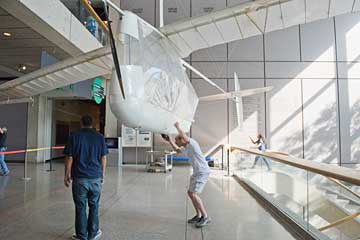
Mark Drela guides Monarch as it is lowered from display
Before removal, Monarch team members determined the plane's plastic skin had deteriorated significantly over the decades to the point where it could not be saved intact - even a light dusting causes it to crack and split. Significant parts of the craft have been saved by the MIT Museum, and one wing section has made its way to the AeroAstro Hangar. Companion MIT human-powered aircraft Daedalus 87 and hydrofoil Decavitator remain on display at the Science Museum.
8. Hands-on satellite development class planned
Pending approval, a special graduate (16.898) and undergraduate (16.681) class will involve students in the hands-on design, building, and testing of the CASTOR satellite (formally called OSMV). CASTOR is being developed under the Air Force Office of Scientific Research's University Nanosatellite Program. For more information about the satellite, visit the MIT Satellite Team Web site. For more info about the course, email Professor Dave Miller at millerd@mit.edu.
An interesting related article appears on the Lincoln Lab Web site.
![]()
9. Mars Biosat Project bids goodbye
A student project, begun in 2001, that had hoped to earth-orbit mice in simulated Mars gravity, has been retired. Current economic pressures coupled with changing NASA priorities are cited as the reasons the organizers are closing the Mars Gravity Biosatellite Program. The project did see many successes during its eight-year run including educating more than 600 students about aerospace engineering, space life sciences, and program management; pubishing papers and presentations, testing hardware; and earning numerous awards.
10. AA clubs offer great opportunities
AeroAstro clubs offer excellent opportunities for activities with peers who share common interests and enthusiasm. Students are welcome to contact any of the organizations listed below. Some of the groups also welcome department alumni, staff, and faculty.
One of the newest groups is the Women's Graduate Association of Aeronautics and Astronautics. Coordinator Sameera Ponda says that the WGA3 "is a group for graduate women in Aero/Astro at MIT. Its objective is to build a community and encourage relationships between graduate women in aerospace engineering, women faculty in Aero/Astro, and women throughout MIT."
AA Clubs are:
- American Institute of Aeronautics and Astronautics, MIT Chapter
- Flying Club
- Graduate Association of Aeronautics and Astronautics
- Intramural Sports
- Mars Society
- Rocket Team
- Satellite Team
- Space Elevator Team
- Students for the Exploration and Development of Space
- Women's Graduate Association of Aeronautics and Astronautics
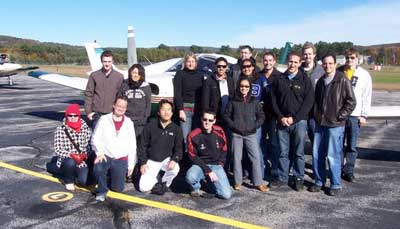
The MIT Flying Club at its '08 fly-out to Keene, NH.
If you're interested in organizing a new group or club, visit the MIT Association of Student Activities Web site. Also, AeroAstro Student Services Director Barbara Lechner will be glad to assist you.

Jack Schmitt (l.) and Chris Kraft appear on the Apollo Symposium DVD
11. Giant Leaps DVDs on the way
Those who enjoyed AeroAstro's fantastic Giant Leaps June celebration of the Apollo moon landing, and those who weren't there but wish they could have been, will be pleased to learn that a video highlights DVD of the Symposium has been produced and will be distributed in the next few weeks to all in the department with the 2008-2009 department annual publication AeroAstro. A multi-DVD set will also be available, by request, that includes the entire Symposium, the Robert Seaman's Memorial event, and the special video productions commissioned for both. There are also a number of videos related to MIT's role in Apollo available on TechTV.
And, if you can't get enough Apollo, you might want to check out the recently released iPhone app "Apollo 11: the Game." (Thanks to Philllip Cunio for the heads-up.)
12. '09 Chem Hygiene Plan required reading for researchers, supervisors
The 2009 Chemical Hygiene Plan is now posted on the AeroAstro Environment, Health, and Safety Web page. Researchers and lab supervisors are required to read the plan and certify that they have done so by completing and signing the online form, also located on this page.
AeroAstro is committed to providing a safe environment. Together with the Environment, Health, and Safety Office, we promote environmentally responsible practices, reduce our environmental impact, and protect the community's health and safety within our workspaces.
13. MITweets from AeroAstro
Don't wait for your enews and emails — keep up with AeroAstro news as it happens — follow the department at mitaeroastro on Twitter!


